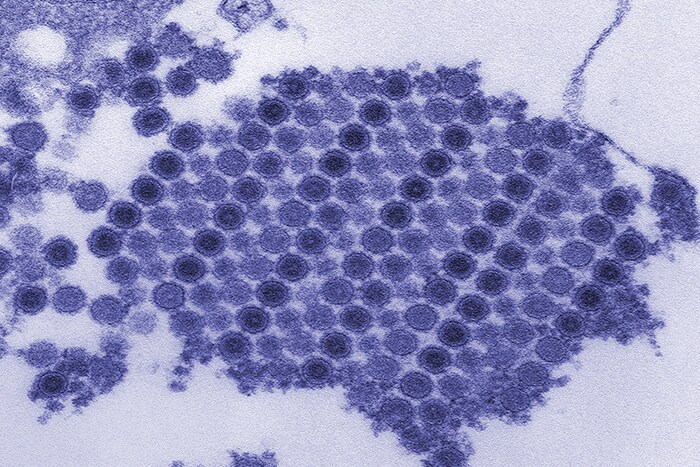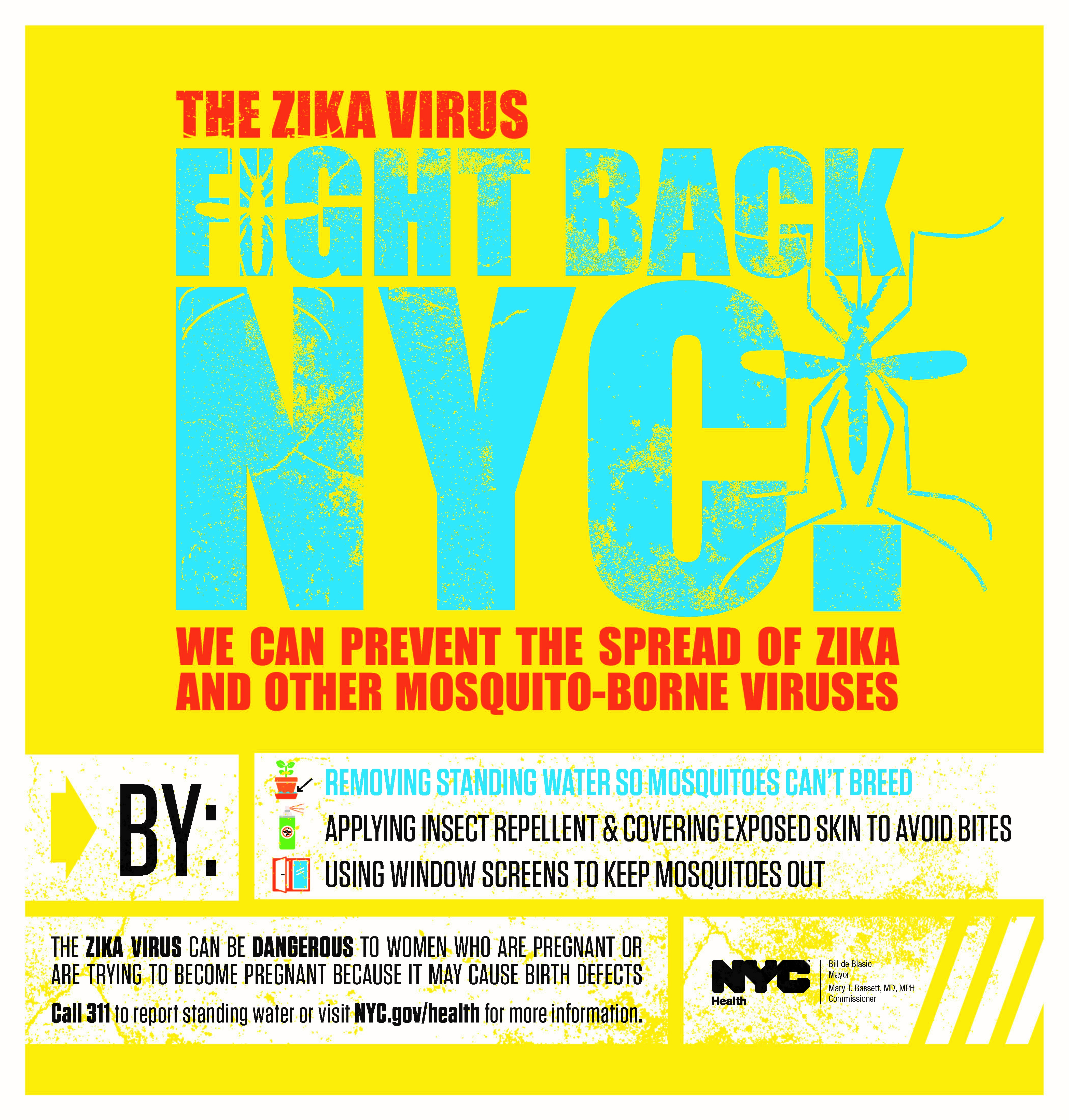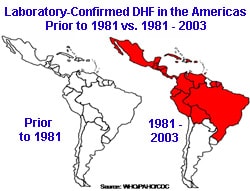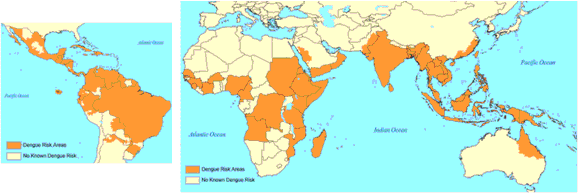Archive for April, 2016
Positive IgM for Zika virus in the cerebrospinal fluid of 30 neonates with microcephaly in Brazil
Thursday, April 21st, 2016Man Gets 16 Years for Attempting to Purchase Ricin
Thursday, April 21st, 201604/19/16
It was a very scary scenario: Chinese national Cheng Le, living in New York City, attempted to order ricin through the so-called dark web.
Ricin, of course, is a highly potent and potentially fatal toxin with no known antidote. And the dark web includes a number of extensive, sophisticated, and widely used online criminal marketplaces that allow participants to buy and sell all kinds of illegal and often dangerous items, including drugs, firearms, and hazardous materials, like ricin.
What did Le plan to do with the ricin? Nothing good. According to U.S. Attorney for the Southern District of New York Preet Bharara, “In Le’s own words, established at trial, he was looking for ‘simple and easy death pills’ and ways to commit ‘100 percent risk-free’ murder.”
While on a particular dark web marketplace in early December 2014, Le asked, “This might sound blunt but do you sell ricin?” Fortunately, the individual at the computer on the other end was not a trafficker in lethal poisons—instead, it was an undercover FBI employee.
For the next couple of weeks or so, Le and the undercover employee exchanged more than 20 encrypted messages. Some of Le’s communications included:
- “If [the ricin’s] good quality, I’ve already had buyers lining up.”
- “Does ricin have an antidote? Last I check there isn’t one, isn’t it?”
- “The client would like to know…if it is wise to use ricin on someone who is hospitalized…Injection will leave needle holes on the body which could be found in regular forensic examinations. But hospitalized people already have needles in them so it wouldn’t be suspicious…”
- “I’ll be trying out new methods in the future. After all, it is death itself we’re selling here, and the more risk-free, the more efficient we can make it, the better.”
- “Also, besides that one bottle of pills with one poisonous pill in there, can you send some extra loose powder/liquid ricin? I’d like to test something.”
Sometime during these exchanges, Le revealed to the undercover employee that he had a specific victim in mind: “Someone middle-aged. Weight around 200 pounds.”
Ultimately, Le placed his order, paying with bitcoins, a virtual currency. Bitcoins themselves are not illegal and have known legitimate uses. However, they are also a common form of payment for illegal goods and services on the dark web because of the anonymity they provide.
On December 18, 2014, Le directed his contact to send a quantity of ricin to a rented postal box at a Manhattan shipping store (investigators later determined that Le had rented the postal box using the name of an individual whose identity he had stolen).
 |
||
|---|---|---|
| The phony pill sent to Le glows under ultraviolet light, just as real ricin would. |
The Bureau prepared a mock shipment exactly as Le had requested—with one small difference: the “ricin pill” concealed in a pill bottle and the loose “ricin powder” were fake. And on December 23, the sham shipment was delivered to the requested postal box. Le, wearing latex gloves, retrieved the package, opened it, and took it to his apartment. Agents, armed with a search warrant, entered the apartment, collected the evidence, and arrested Le.
Le was tried by a federal jury and convicted in August 2015 of, among other things, attempting to possess a biological toxin for use as a weapon and aggravated identity theft in relation to a terrorism offense. Last month, he was sentenced to 16 years in prison, a term that had been enhanced by the aggravated identity theft charge.
And as a result of yet another successful joint law enforcement investigation—this one by the FBI, New York Police Department, and U.S. Postal Inspection Service—a criminal who posed a deadly threat to the public is behind bars.
ISIS jihadists are planning to attack Italian, French and Spanish beach resorts this summer by posing as refugees selling ice cream and T-shirts.
Wednesday, April 20th, 2016The Pan American Health Organization (PAHO) reported 2,508 new cases of chikungunya in the Americas, bringing the 2016 outbreak total to 43,624 confirmed and suspected cases.
Wednesday, April 20th, 2016
Wednesday, April 20th, 2016
City of New Orleans Develops Comprehensive Plan to Address Zika Virus
April 18, 2016
NEW ORLEANS – Today, the City of New Orleans announced that the New Orleans Health Department (NOHD) and the New Orleans Mosquito, Termite and Rodent Control Board (NOMTCB) developed a comprehensive plan to provide direction for the prevention and mitigation of Zika virus in Orleans Parish. Zika virus is most commonly transmitted to people through the bite of a Zika virus infected mosquito. At this time, there are no locally transmitted cases of the Zika virus in New Orleans. Four travel-related cases of Zika virus have been identified in Louisiana.
Click here to see the Zika Virus plan. ![]()
“We take the public health threat posed by the Zika virus very seriously,” said Mayor Mitch Landrieu. “We proactively put this plan in place to ensure that we are prepared and coordinated in the event of Zika transmission in New Orleans. Residents are highly encouraged to do their part to protect themselves and their loved ones from mosquitos.”
The Comprehensive Zika Plan was developed to guide coordination among various departments and identify preparedness and response initiatives to be taken in the city. These actions rely on the collaboration of several agencies including NOHD, NOMTCB, Louisiana Department of Health & Hospitals (DHH), the Centers for Disease Control and Prevention (CDC), Tulane University School of Public Health & Tropical Medicine, and the Louisiana Mosquito Control Association.
The plan outlines Zika virus management in three phases: no reported cases, travel-related cases and local transmission. Within each phase, the components of mosquito control, public education & media outreach, and interagency coordination are addressed. The plan is a living document subject to change and includes potential actions that may be taken. However, the level of implementation depends on the number of cases.
Moving forward, NOMTCB and NOHD will continue to coordinate with key partners to provide information about the Zika virus to the public.
NOMTCB has initiated its 2016 mosquito surveillance program which is monitoring the two mosquito species that are the primary carriers of Zika virus, the Yellow Fever mosquito and the Asian Tiger mosquito. NOMTCB uses an integrated mosquito management approach which includes mosquito population surveillance, public education, source reduction, eliminating mosquito breeding sites, biological control and pesticides when appropriate. Spray trucks and airplane spraying will be used if needed.
Mosquitos breed in standing water. Residents are encouraged to assist in reducing mosquito populations around their homes and businesses by removing trash and clutter; disposing of discarded tires and containers that can hold water; and turning over wading pools, buckets, trash cans, children’s toys or anything that could collect water.
Click here to download a factsheet on the Zika virus
About Zika Virus
Zika virus is transmitted to people through the bite of an infected mosquito. One in five people infected may develop symptoms, which include fever, rash, joint pain, muscle pain, headache and red eyes. Symptoms usually begin 3-7 days after being bitten by an infected mosquito. The illness can cause mild symptoms lasting up to a week.
At this time, there is no vaccine to prevent Zika virus infection, nor any specific medicine to treat it.
If diagnosed with Zika virus, you are urged to protect yourself from mosquito bites. If a mosquito bites you, it can spread the virus and infect others. ZIka can also be spread through sexual contact. If you have have been exposed to Zika you should use condoms or abstain from sexual activity for at least eight weeks. If infection is suspected, travel history should be shared with the healthcare provider.
The CDC recommends treating the symptoms by resting, drinking fluids and taking certain types of pain medicine. Click here for more information ![]() .
.
Zika virus can be spread from a mother to her fetus during pregnancy. Zika can cause a number of a number of health concerns during pregnancy including Microcephaly. Microcephaly is a birth defect that causes a baby’s head to be smaller as compared to other babies that are the same sex and age. Babies with Microcephaly often have smaller brains that might not have developed properly. There is no treatment to correct Microcephaly.
CDC Travel Alert
On Jan. 15, 2016, the CDC issued a travel alert for people traveling to regions where Zika virus transmission is ongoing.
Click here for a list of affected countries ![]() .
.
Pregnant women in any trimester should consider postponing travel to the areas where Zika virus transmission is ongoing. If you must travel to one of the areas, talk to your doctor first and strictly follow steps to prevent mosquito bites during the trip. It is safe for pregnant and breastfeeding women to use insect repellent.
SAFETY TIPS
Protecting Yourself
- Reduce mosquito exposure by limiting outdoor activities between dusk and dawn.
- Use air-conditioning and make sure window and door screens are in good repair to prevent mosquitoes from getting inside.
- If outside for long periods of time, wear long-sleeved shirts and pants.
- The CDC recommends using repellents containing EPA-registered active ingredients including DEET, picaridin, IR3535 or oil of lemon-eucalyptus.
- When using repellent, always follow the recommendations on the product label.
Protecting Your Home and Business
- Eliminate standing water around your home, where mosquitoes breed.
- Remove trash and clutter, dispose of discarded tires and containers that can hold water. Turn over wading pools, buckets, trash cans, children’s toys or anything that could collect water.
- Change water weekly in containers that cannot be removed, such as pet dishes or bird baths. Scrub the side of the containers each week to remove the eggs that have been deposited.
- Rain barrels and other water collection devices must be screened and collected water should be used within one week.
- Aerate ornamental pools, fountains and sugar kettles or stock them with fish.
- Report illegal dumping, water leaks and unattended swimming pools and by calling 311.
- Call 311 or email mosquitocontrol@nola.gov to report mosquito problems.
Tires are easily filled with water by rain and collect leaf litter, providing an ideal breeding site for mosquito larvae. Eliminating scrap tire dumps will eliminate a prolific mosquito habitat.
- Residents can place up to four tires weekly, stacked curbside along with their household trash.
- Tires in front of abandoned lots will not be collected; they must be moved in front of a residence with curbside collection.
- Residents can also bring up to four tires to the City’s Recycling Drop-off Center on the second Saturday of each month, which is located at 2829 Elysian Fields Avenue between 8 a.m. and 1 p.m.
Click here for more information on Household Item Recycling ![]() .
.
###
NYC versus Zika virus
Wednesday, April 20th, 2016FOR IMMEDIATE RELEASE: April 18, 2016
MEDIA CONTACT: pressoffice@cityhall.nyc.gov, (212) 788-2958,
Mayor De Blasio Announces Three Year, Five-Borough Plan To Protect New Yorkers From The Zika Virus
City’s Zika Action Plan Enhances Mosquito Surveillance and Control
Expands Testing of Humans and Mosquitoes, and Launches Public Awareness Campaign
New York—Marking the start of mosquito season, Mayor de Blasio today detailed a three-year, five-borough plan to protect New Yorkers and prevent the spread of the Zika virus in New York City.
“We are doing all we can to target the mosquito that could transmit Zika here in the city, and building the capacity to respond to every possible scenario, no matter how unlikely,” said Mayor Bill de Blasio. “We will spare no effort to protect pregnant New Yorkers from the devastating consequences of Zika, and we ask New Yorkers to help us by taking simple steps to get rid of standing water where mosquitoes can breed. We also ask pregnant women who may have been exposed to Zika to talk to their doctors about getting tested.”
Building on the Health Department’s robust West Nile virus mosquito control program, the Mayor’s plan expands mosquito surveillance and control to identify and target mosquitoes that could potentially transmit the Zika virus; creates capacity to meet a growing need for testing pregnant New Yorkers and local mosquitoes for the virus; and launches a comprehensive campaign to disseminate prevention and testing information throughout the city. The plan will add 51 new positions to address all these needs—including inspectors, exterminators, disease inspectors and lab analysts—and it will double the number of mosquito traps placed across the city. Zika investment totals $21 million over a three-year period, including a New York State match.
The City’s Health Department activated its Incident Command System— an internal organization structure deployed during emergency situations —in February, after the World Health Organization rang the alarm about the Zika outbreak. The City’s Zika Action Plan was informed by the latest scientific evidence, conversations with the Centers for Disease Control and Prevention, and advice from clinical and mosquito control experts who participated in two high-level consultations convened by the City over the past two months. The plan was reviewed and discussed with 14 relevant City agencies last week at a tabletop exercise held at the Office of Emergency Management.
“There are a lot of unknowns around the Zika virus, but New York City is prepared to confront all possible scenarios, including a dramatic increase in imported cases over the summer and the potential for local transmission,” said Deputy Mayor for Health and Human Services Dr. Herminia Palacio. “We already have one of the most robust mosquito control infrastructures in place to manage West Nile virus, and we are building on that to reduce the chance of a local outbreak.”
“The City’s Health Department has successfully helped limit mosquito borne diseases for more than 15 years, when the West Nile virus emerged. We are using our technical knowledge and experience to gather as much information as possible and to respond swiftly to this emerging situation,” said Health Commissioner Dr. Mary T. Bassett. “New Yorkers best defense against Zika is to avoid travelling to affected areas, talk to their doctor if they are concerned about having been infected, use mosquito repellant, and remove standing water in and around their homes.”
The City’s plan to combat the Zika virus focuses on the following three areas:
1. Clinical Services
Increased human testing: Increased human testing: As the City encourages pregnant women who visited an affected area while pregnant to get tested for Zika, the Health Department is expanding capacity to meet the increasing demand for testing. In March, the Department established a new dedicated call center for health care providers to process testing requests. More information on who should seek testing can be found here.
Increased mosquito surveillance: The Department is also expanding its capacity to trap, test, and report about the types of mosquitoes in NYC and the viruses they may carry. Enhanced surveillance will help the City quickly detect and respond to locally transmitted cases. The Department is working closely with the New York State Health Department and Centers for Disease Control (CDC) and Prevention on the latest testing methods.
Care Management for Women: The Department has distributed travel advisory posters to 1,051 healthcare providers likely to see pregnant women, including urgent care centers, community health centers and OB/GYN practices. It is also working with the American College of Obstetrics and Gynecology to disseminate medical guidance and answer provider questions about testing, on implementing protocols for care management of pregnant women, and collaborating with CDC on a national registry of Zika-infected pregnant women. In March, the Health Department deployed Community Outreach Teams to conduct outreach to over 200 health care providers catering to New York City women.
2. Mosquito control
The Aedes aegypti mosquito causing the Zika outbreak in Latin America has never been found in New York City. Nevertheless, there is concern that a similar species that does live in the City, Aedes albopictus, could carry and transmit the virus if it bites a New Yorker who was originally infected elsewhere.
Building on its successful West Nile virus control infrastructure, throughout mosquito season (typically April through September) the Health Department will monitor Aedes mosquito populations weekly throughout the city. Areas with higher numbers of Aedes mosquitoes will be targeted earlier and more frequently for enhanced mosquito abatement, including: breeding ground control, which eliminates standing water; larviciding, which targets the larval life stage of a mosquito; and adulticiding, which kills the adult insects. The agency will add 61 new mosquito traps that specifically attract Aedes species of mosquitoes and will place additional traps in areas where they are found in large numbers.

3. Public Awareness
Media campaign: On Monday, April 18th, the City will launch a citywide awareness campaign with the tagline Fight Back NYC (ad on the right). The $1.2 million campaign will be on buses, subways, TV and radio in all five boroughs. The campaign reminds residents of the steps they can take to reduce and prevent mosquito bites. New Yorkers can protect themselves from mosquito bites by wearing protective clothing, using mosquito repellant, eliminating standing water—the breeding sites for mosquitoes—and by emptying any standing water in bird baths, cans, flower pots or any place where water could gather and mosquitoes could lay eggs. New Yorkers should call 311 to report any standing water they cannot manage themselves.
Community outreach: The Health Department has scheduled more than 200 community outreach events across the city to disseminate information about travel warnings, mosquito prevention and available testing, with a particular focus on neighborhoods with high mosquito activity and on communities with large numbers of immigrants from countries affected by the Zika outbreak. The Health Department will also coordinate the distribution of free insect repellent to pregnant women by working with clinicians and community health providers.
Staten Island Borough President Jimmy Oddo said, “I appreciate the communication we’ve had with the administration on this important issue and for taking these common sense steps. The bottom line is, we can hope for the best, but we need to ready ourselves for the worst.”
“Preparation is critical to manage the impact of any potential health emergency. I thank the leadership of the de Blasio administration for mobilizing City resources in advance of mosquito season, preparing and educating New Yorkers for the Zika virus,” said Brooklyn Borough President Eric Adams.
“Proactive planning for emerging public health threats is smart, responsible and exactly what government is supposed to do,” said Manhattan Borough President Gale A. Brewer. “I thank Mayor de Blasio and Commissioner Bassett for pursuing this initiative. Preparation and prevention are key to protecting public health.”
“As we move into mosquito season, it’s essential that New York bring all its resources to bear in our efforts to prevent the spread of Zika. That means increased testing and stronger mosquito control efforts, as well as improved public awareness and outreach. I want to thank Mayor de Blasio and Health Commissioner Bassett for their on-going vigilance,” said State Senator Brad Hoylman, Ranking Member of the Environmental Conservation Committee and Member of the Health Committee.
“The de Blasio administration’s comprehensive three-year plan to combat the Zika virus shows why New York City is a national leader when it comes to protecting public health. By aggressively targeting the mosquitoes that can transmit the virus, increasing testing and alerting the public and health care providers to the danger, particularly to pregnant women, City health authorities are moving effectively to combat this potential threat to New Yorkers’ health,” said Assembly Member Richard N. Gottfried, Chair of the Committee on Health.
“I commend Mayor de Blasio and Health Commissioner Dr. Mary T. Bassett for the City’s visionary and far-reaching plan to combat the Zika virus in New York,” said Assembly Member Luis Sepúlveda. “Encompassing enhanced mosquito surveillance and control, expanded testing of mosquitoes and humans, and a sweeping public awareness campaign, the administration is showing excellent leadership and its relentless vigilance in protecting the public, which is especially urgent for pregnant women.”
“All necessary measures must be taken to protect New Yorker’s from Zika virus,” said Council Member Corey Johnson, Chair of the Committee on Health. “The Department of Health’s comprehensive plan will fortify our city’s robust mosquito control system. With increased awareness and community surveillance, we must be vigilant against mosquito-transmitted Zika virus. I thank Mayor de Blasio and Deputy Mayor Palacio and Commissioner Dr. Bassett for marshaling the resources to keep New Yorkers healthy and safe.”
More information about the Zika virus, including latest number of cases, facts about the disease, travel warnings, countries affected, and mosquito prevention tips, can be found on the City’s Health Department website.








